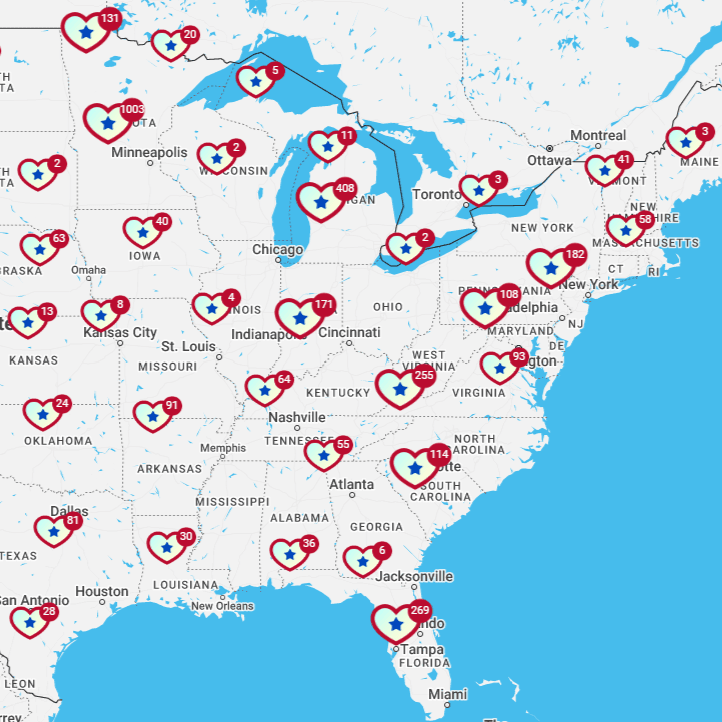
What Are Exit Polls?
As the 2024 election season continues to heat up, you may hear the term “exit poll” thrown around more frequently. But what are exit polls, how are they conducted, and how should you interpret their results?
In this guide, we’ll walk through the answers to these questions and more.
Understanding Exit Polls
Almost everyone, from the common citizen to the political data scientist, wants to know the results of an election as soon as possible. For this reason, exit polls are a very useful tool.
Exit polls attempt to understand how and why voters make certain electoral choices. Voters have the option to take the poll as they are coming out of their polling locations after voting. They may take the exit survey either on paper or online. Depending on the polling methodology, the interpretation of the results often comes well before the official end of the election, especially if the survey is conducted online.
Such election-day surveys are useful to the media, as the results of these polls allow live coverage of an election and speculation on the election’s outcome. While exit poll reliability can fluctuate, historically, these types of election polling and voter sentiment analysis have provided an accurate snapshot used for election prediction modeling.
More significantly, an exit poll may reveal the reasons behind the votes cast by various groups of individuals, in addition to providing information on how they actually voted. Political scientists expect the 2024 elections to be a roller coaster, and early attempts at political analysis prior to the elections have not always proved accurate. Surveys of voter exit behavior, through surveys given in the form of polling station interviews, tend to be more accurate.
How Exit Polls Work
There are a variety of exit polling techniques, ranging from paper surveys to online surveys taken by scanning a QR code to in-person interviews as people exit the polls. One polling methodology even had voters drop small plastic balls in a bin for each candidate to give a visual on which candidate did the best in the election. Election data collection and interpretation vary depending on the polling methodology used, but most are done electronically. Some digital forms of polling even allow for the evaluation of voting patterns as the election unfolds.
However, not every voter receives an exit survey. In some forms of election polling, only every other voter, or every seventh voter, is approached for participation in election data collection. Aside from saving time, the idea behind this strategy is that the sample will prove representative of the whole.
Exit questionnaires are anonymous, and if someone refuses to participate, pollsters note that refusal in the results, which are then adjusted during data interpretation. These polls do not just ask who the person voted for. Pollsters usually craft questions to get clues into voter behavior. For example, did everyone understand the process of voting, or what do they think about the economy? These are some of the kinds of questions asked in election-day surveys so that political scientists can conduct a voting pattern evaluation and voter response analysis.
Interpreting the Results of Exit Polls
Exit polls have a variety of uses, and the strategies for interpreting their data reflect this variety. Here are a few key questions to ask when interpreting the results of exit polls:
What was the intended purpose of the exit survey?
What was the sample size of the exit poll?
How many polling locations were included in the exit survey?
What was the timing of the exit polling, compared to the overall hours the polling locations were open?
What is the larger context of the election? Are there any important political, social, or economic factors that should be considered?
It can also be useful to compare exit poll data with historical election data, pre-election surveys, and any other relevant information. Voters and analysts should be cautious of relying too heavily on exit poll data, especially as they await the definitive outcome of the election. Especially in close or hotly contested elections, margins of error could lead to incorrect conclusions.
Examples of Exit Polls
Here are a few examples of successful election polling efforts in previous elections:
The 2024 elections in the New Hampshire primaries accurately predicted Donald Trump as the 2024 GOP contender for that state based on voter sentiment analysis.
In the 2020 American presidential election, exit surveys correctly indicated a preference for Joe Biden among Hispanic voters in a voting patterns evaluation.
As a way of assessing the accuracy of polling, election-day polls in Kansas verified the voting machine counts in the 2016 election.
Other Forms of Political Polls
Exit polls are just one kind of political polling. Many candidates and their campaigns prefer to conduct pre-election polls and benchmark polls prior to Election Day. As the name implies, pre-election polls are voter response analysis tools conducted before the actual election date, often through online and paper surveys or robo-calls.
In the past, these pre-election polls were reasonably accurate, but in the last twenty years, their reliability has shifted. The results can fluctuate so severely from actual election outcomes that some political scientists do not give their results much weight. Voting patterns evaluation methods vary, so it is important to make use of an election polling method that provides the most accurate data.
Benchmark polls are slightly more accurate, in that they do not take place only once but instead administer several questionnaires over time. These are also called “tracking polls” and are useful for setting a baseline early in the election process. Participants take another survey later on at a set time, followed by a final survey after the election. This election data collection method offers better accuracy of political data, as pollsters are able to track changes in trends over time. This insight into public perception allows candidates to better tailor their political messages going forward.
Beyond these examples, there are still more kinds of political polling, such as straw polls and push polling.
Level Up Your Civic Engagement
Political analysis can be tricky at the best of times, and interpreting election data can prove especially challenging in today’s polarized environment. That’s why it’s important to find a safe, sustainable community to take it all in and discuss the latest political developments.
Want to join the movement for a fairer, more representative government? Connect with independent-minded voters across the United States by joining GoodParty.org’s growing online community, or learn more about how GoodParty.org is working to reform the dysfunction of our current political system.
